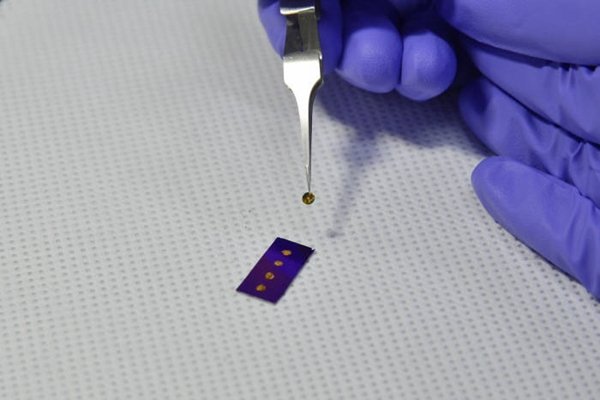Thermoelement with excellent performance that changes heat into electricity has been developed. South Korean research team has made ‘graphene nanomesh’ structure by making holes on graphene evenly.
Team led by Professor Son Jung-kon of Korea Institute of Science and Technology (KIST) Photoelectricity Hybrid Research Center has made graphene nanomesh structure by making uniform holes with length of 10 nanometers just like holes of briquette on either single-layered or double-layered graphenes. This structure lowers high specific thermal conductivity of graphene and secures high thermoelectric coefficient. Research team has evenly implemented fine patterns on large area and has secured a technology that can control changes in characteristics by measuring specific thermal conductivity and thermoelectric characteristics of this structure.
It is heard that performance of thermoelement is proportional to thermoelectric coefficient and electric conductivity, which are changes in electromotive force due to changes in temperature, and is inversely proportional to specific thermal conductivity. Graphene has unique characteristics compared to current materials. It is currently an obstacle in maximizing characteristics of thermoelectricity as it has high electric conductivity and specific thermal conductivity and relatively low thermoelectric coefficient.

Graphene nanomesh structure that was developed by research team selectively induces phonon scattering as electron that sends heat is flowed without any loss and as movement of phonon is controlled. Phonon scattering is a phenomenon where moving route of phonon’s delivery phenomenon is changed from a part where crystal is distorted. This structure lowers specific thermal conductivity while maintaining electric conductivity. Fact that it can rapidly increase thermoelectric performance by increasing thermoelectric coefficient through formation of band gap as it is quantized as a pattern was experimentally proven.
“Technology that controls thermoelectric characteristics through graphene nanomesh structure will present new paradigms in application of flexible low-temperature thermoelement that has recently emerged as an alternative energy harvesting method.” said Professor Son Jung-kon of KIST. “It will become a groundbreaking solution for nano-structured low-level materials, original research on flexible thermoelement, and materialization of wearable self-driving instrument.”
Result of this research was published online on the 17th through ‘Nano Energy’, which is a scientific journal for energy field.
Staff Reporter Song, Hyeyoung | hybrid@etnews.com